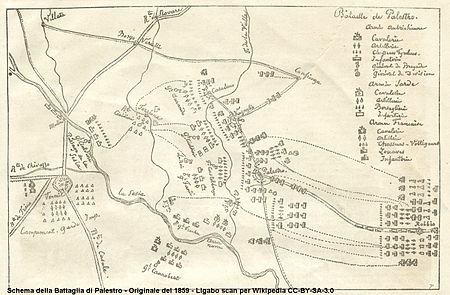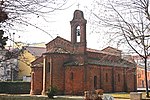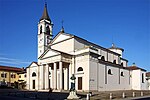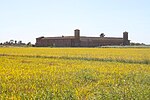Battle of Palestro
1859 in France1859 in Italy1859 in the Austrian EmpireBattles involving AustriaBattles involving France ... and 6 more
Battles involving ItalyBattles involving the Kingdom of SardiniaBattles of the Second Italian War of IndependenceConflicts in 1859May 1859 eventsPalestro

The Battle of Palestro was fought on 30–31 May 1859 between the Austrian Empire and the combined forces of the Kingdom of Sardinia-Piedmont and France. The Franco-Piedmontese forces were victorious. It was fought just south to Palestro, a town in what is now the province of Pavia in northern Italy. It was believed that the Battle of Palestro was the last European battle in which a European Monarch rode into battle, that being King Victor Emmanuel II, who directly entered the fray with the Austrians.
Excerpt from the Wikipedia article Battle of Palestro (License: CC BY-SA 3.0, Authors, Images).Battle of Palestro
Geographical coordinates (GPS) Address Nearby Places Show on map
Geographical coordinates (GPS)
| Latitude | Longitude |
|---|---|
| N 45.312222222222 ° | E 8.5461111111111 ° |
Address
Cascina Sant'Anna
27038
Lombardy, Italy
Open on Google Maps





